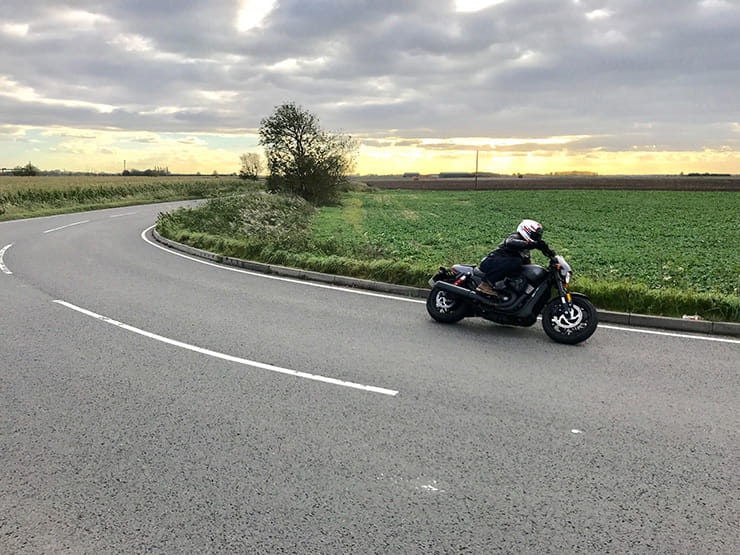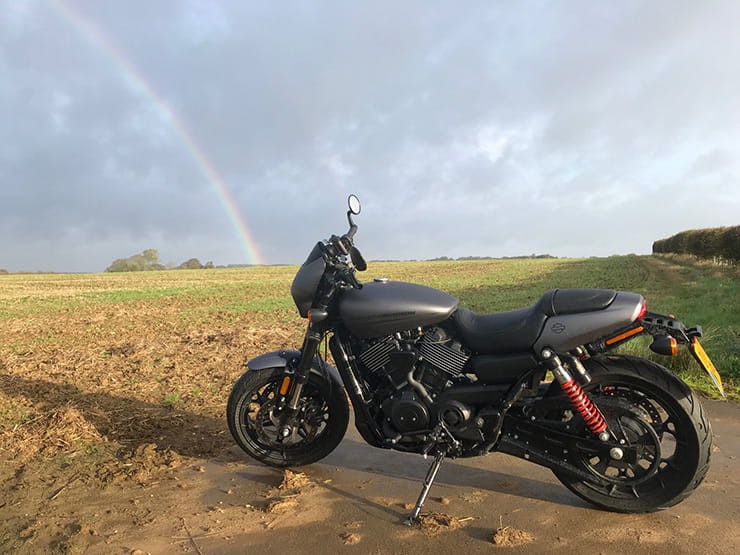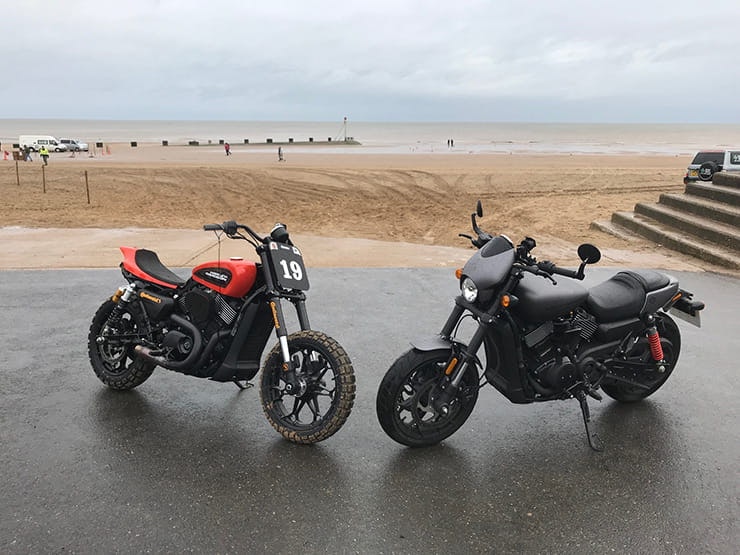Harley-Davidson Street Rod (2017) - Review | 10 Things to Love and…Not Love
By Michael Mann
BikeSocial Managing Editor
31.10.2017
“Mablethorpe is like the Monaco of Lincolnshire,” said a colleague attempting to add some polish to the hideous looking forecast ahead of a planned trek from Peterborough to the land that time and class forgot. However, the seaside town still hosts fortnightly beach racing from October to March each year and attracts several hearty souls even on a wet and windy day like this.
I didn’t believe him. The similarity of casinos based in both Monte Carlo and a town on England’s east coast was as far as it stretched, I certainly wasn’t aware of any 2p shuffle machines, fish & chip shops, Greggs or “I’m with stupid” t-shirt retailers near the Cote d’Azur.
Nevertheless, off to support a beach racing colleague I plodded with four base layers and, for the first time this year, the lining in my jacket. BikeSocial’s daredevil and former Gladiators finalist (you know, the 90s TV show with lycra-clad athletes and their 0% body fat and where we all fancied Jet), Kane Dalton, had been invited by Harley-Davidson following his exploits at Dirt Quake back in the summer to do a little beach-oriented dirt tracking. The American manufacturer had in turn summoned IDP Moto to run a dozen ‘race-prepped’ Harley’s for the world-wide series which includes the forthcoming Snow Quake, in Northern Italy. Anyway, BikeSocial had been tasked with shaking down the dirt-tracked Street Rod. But that wasn’t my job, thankfully.
All I had to do was hold a video camera and do some commiseratory/celebratory back-patting where necessary. Well, that and review the road-going version as part of our long-term test fleet. You can read what my colleagues thought of it here.
After a glum trip to Silverstone and back last month and several commutes, the Mablethorpe run brought up my 350th mile spent in the Street Rod’s saddle. I say glum because I couldn’t understand at that point why anyone would spend money on the little Harley, it has the most uncomfortable riding position of any bike I’ve ever ridden among other issues that we’ll come on to.
There’s a ‘but’.
But (see), I’d been riding it all wrong. I know it shouldn’t be that difficult to sit on the seat and twist the throttle but I’d adjusted myself thinking it was an entry-level cruiser; laid back with feet out and a long reach. And in that position the bike was cursed from about mile number 3. Wrong. It should come with a diagram printed on the fuel tank with a stickman displaying a more hunched forward status with balls of feet as the focus on the foot pegs rather than heels with knees tucked a little tighter. So, once I knew how to sit on the bike, it began to make sense.
That leads me onto my other likes and dislike:
GOOD: Engine/Gearbox - the spritely 750 twin is more lively than its sibling, the Street 750, with revised heads, different cams, the compression ratio increased, 18% more horsepower, 8% more torque and an extra 1,000rpm available. It’s peppy enough down low in the rev range but from the mid-range to the red line is where the power is. It quickly runs out of revs so gears need chucking at it should you be tanking on a bit but the torque is good enough for pottering about around town followed by an urge to overtake. The gearbox offers a quality feel and the lever action is unusually non-clunky.
GOOD: Light clutch – ideal for the new, inexperienced, less confident or just lazy rider.
GOOD: Price tag and badge - cheap and cheerful with the right kinda badge, if that’s what you’re into. Harley-Davidson market the bike as a step into the brand hoping its customers move up to larger and better quality machines through their riding lives.
GOOD: Economy – the claim is 54mpg and for the first time in history a manufacturer’s claims are near enough spot on. At 13.2 litres the tank is a tiddler but you’ll be good for 135 miles before a fuel stop.
BAD and GOOD: Build Quality - the detailing is improved over the Street 750 (coatings, wiring connectors, etc) but you get what you pay for and despite its more ‘premium’ manufacturer badge on the tank, the switchgear and clipped off tie-wraps give away the more budget price tag.
BAD: Throttle connection – woolly, jerky and not ideal for a newbie. This is highlighted at low speed and low revs so town riding becomes less enjoyable and potentially more embarrassing than it should.
BAD: Foot Pegs – no spring return, far too narrow and the rubber insert managed to remove itself. That said, any wider and the ground clearance would be compromised.
BAD: Riding Position – yeah, I know I’ve mentioned it but for days after each ride I can still hear my coccyx screaming. The sportier, squat-like approach definitely helped though.
BAD: Weight – for a motorcycle designed to attract younger folk to the brand, those customers aren’t going to be used to heaving around a 238kg machine leaving it less than convenient to shuffle around in a parking space, for example.
For £6745, there’s a lot of value here and that equates to approximately £100 per month over three years but there’s plenty of competition for either of those amounts; Yamaha’s MT-07 at £6199, Honda’s CB650F at £6599 and Kawasaki’s Z650 at £6099, to name just three.
2017 Harley Davidson Street Rod - Technical Specification


